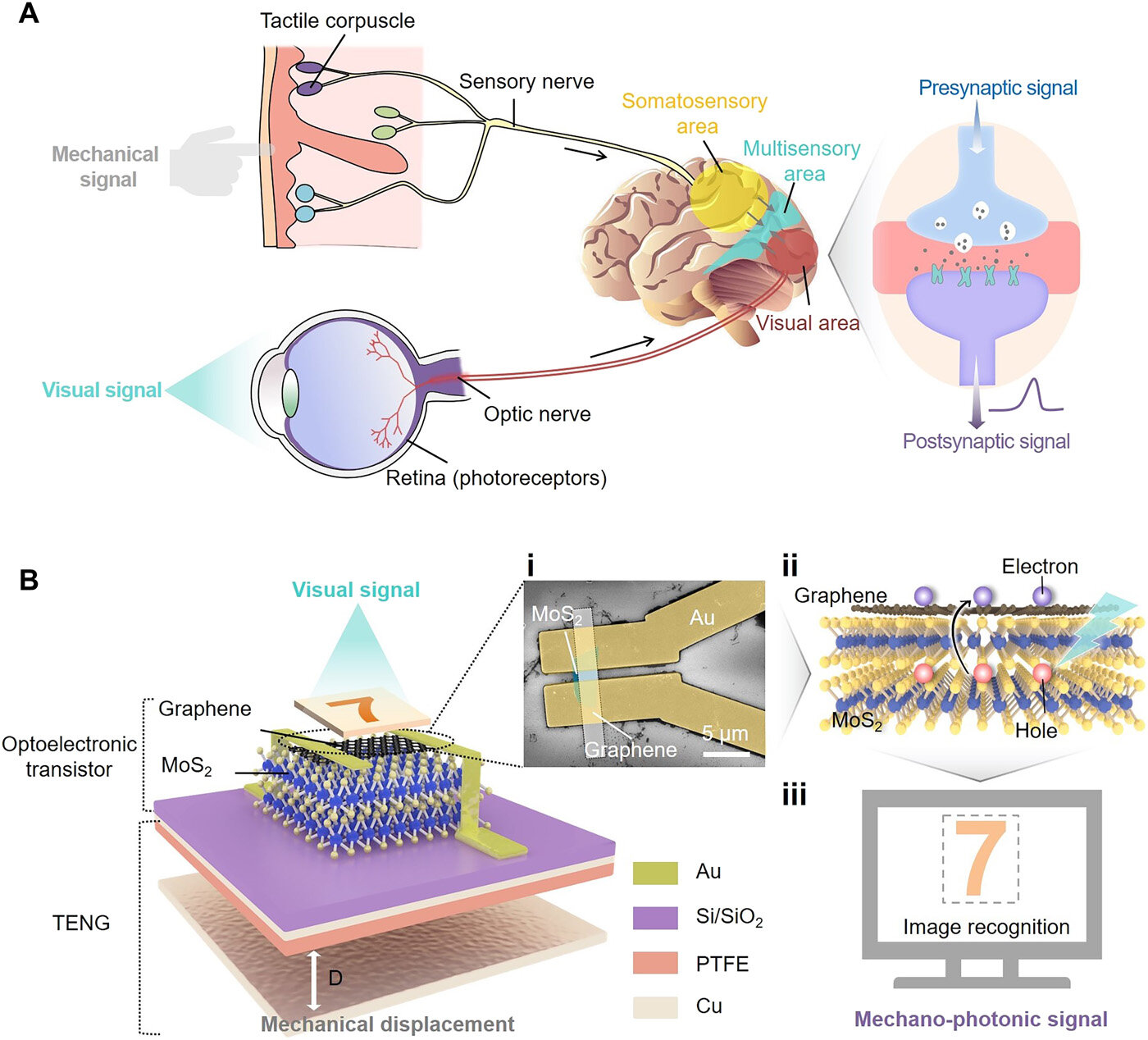
Multifunctional and diverse artificial neural systems can incorporate multimodal plasticity, memory and supervised learning functions to assist neuromorphic computation. In a new report, Jinran Yu and a research team in nanoenergy, nanoscience and materials science in China and the US., presented a bioinspired mechano-photonic artificial synapse with synergistic mechanical and optical plasticity. The team used an optoelectronic transistor made of graphene/molybdenum disulphide (MoS2) heterostructure and an integrated triboelectric nanogenerator to compose the artificial synapse. They controlled the charge transfer/exchange in the heterostructure with triboelectric potential and modulated the optoelectronic synapse behaviors readily, including postsynaptic photocurrents, photosensitivity and photoconductivity. The mechano-photonic artificial synapse is a promising implementation to mimic the complex biological nervous system and promote the development of interactive artificial intelligence. The work is now published on Science Advances.
The human brain can integrate cognition, learning and memory tasks via auditory, visual, olfactory and somatosensory interactions. This process is difficult to be mimicked using conventional von Neumann architectures that require additional sophisticated functions. Brain-inspired neural networks are made of various synaptic devices to transmit information and process using the synaptic weight. Emerging photonic synapse combine the optical and electric neuromorphic modulation and computation to offer a favorable option with high bandwidth, fast speed and low cross-talk to significantly reduce power consumption. Biomechanical motions including touch, eye blinking and arm waving are other ubiquitous triggers or interactive signals to operate electronics during artificial synapse plasticization. In this work, Yu et al. presented a mechano-photonic artificial synapse with synergistic mechanical and optical plasticity. The device contained an optoelectronic transistor and an integrated triboelectric nanogenerator (TENG) in contact-separation mode. The mechano-optical artificial synapses have huge functional potential as interactive optoelectronic interfaces, synthetic retinas and intelligent robots.
The human brain and its associated biomechanical and visual sensations are critical to acquire somatosensory and visual information. The brain contains a variety of neurons that receive interactive signals through varied modes to implement neuromorphic computation in the multisensory association area. Synapses from important points of connection between two adjacent neurons during neural information transmissions. Yu et al. were bioinspired by the brain and nervous system to develop a mechano-photonic artificial synapse with synergistic mechanical and optical plasticity. The mechano-photonic artificial synapse included an optoelectronic transistor and integrated TENG (triboelectric nanogenerator). During the experiments, the team used chemical vapor deposition to deposit monolayer graphene on the optoelectronic transistor, which they then stacked on a multilayer molybdenum sulfide (MoS2) flake on a silicon dioxide substrate. Using the experimental setup, Yu et al. could realize the synergistic optical and mechanical modulation on the synaptic plasticity.
https://phys.org/news/2021-03-bio-inspired-mechano-photonic-artificial-synapse.html
https://advances.sciencemag.org/content/7/12/eabd9117
https://www.nature.com/articles/d41586-018-05297-5
https://www.nature.com/articles/s41563-017-0001-5







Recent Comments